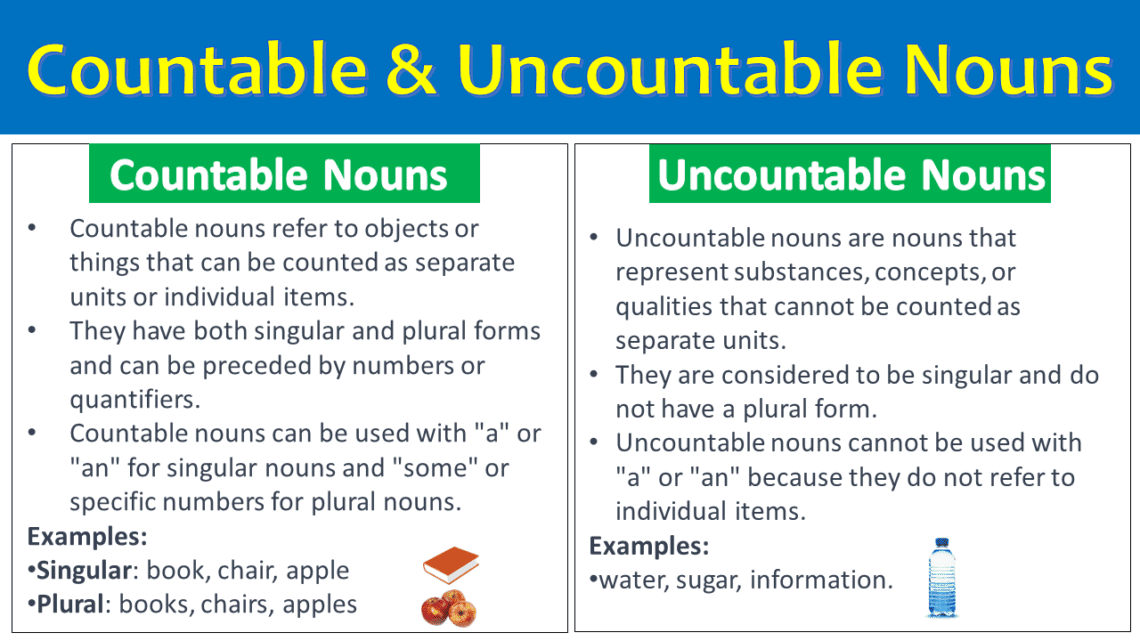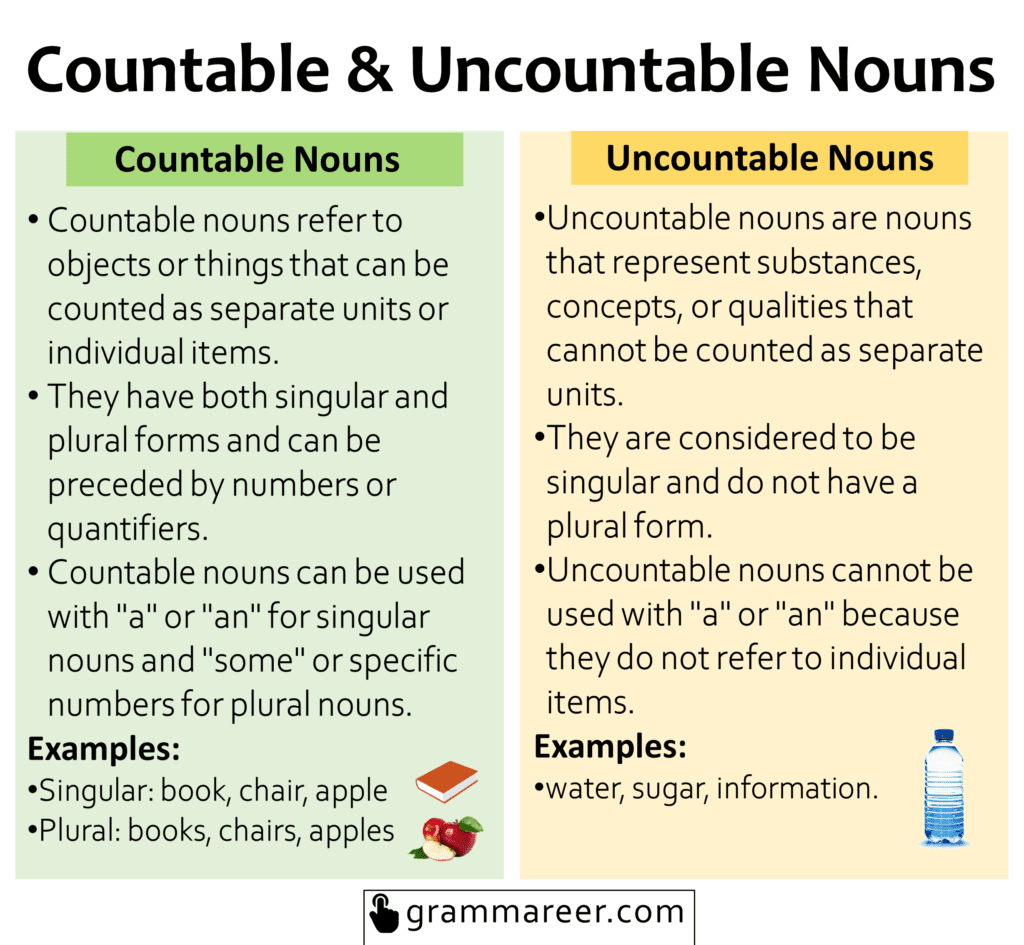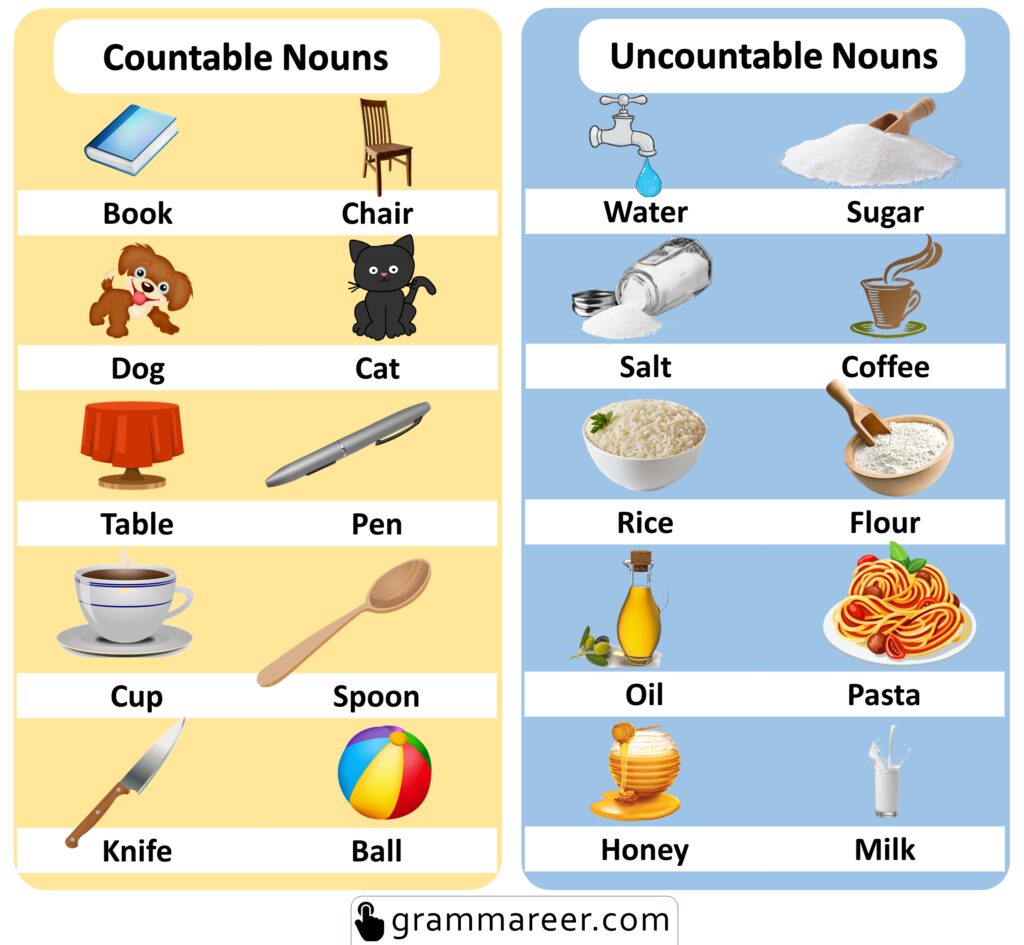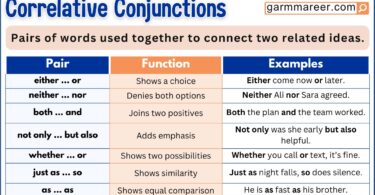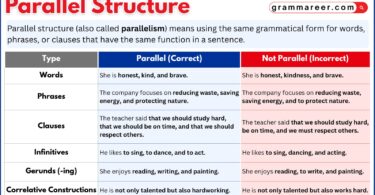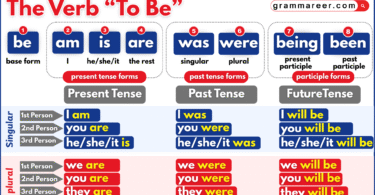Countable and uncountable nouns are two categories of nouns that differ in terms of their countability. Countable nouns that can be counted as individual units. They refer to objects, entities, or concepts that can be quantified. Countable nouns have both singular and plural forms, and we can use numbers or quantifiers to specify their quantity. Countable nouns are the things we can count in our everyday lives. They include objects, people, animals, and many other tangible or visible things. For example, we can count books, chairs, apples, and dogs. We can say “one book,” “two chairs,” “three apples,” or “four dogs.”
Table of Contents
Examples of countable nouns
- Objects: Objects such as books, chairs, tables, cars, cups, pens, phones, computers, bottles, plates, laptops, keyboards, shoes, bags, toys, cameras, umbrellas, bicycles, televisions, mirrors, and more can be counted as separate items.
- People: Countable nouns include individuals such as students, teachers, doctors, artists, singers, musicians, engineers, athletes, writers, parents, children, friends, cousins, siblings, neighbors, colleagues, police officers, firefighters, and actors.
- Animals: Animals like dogs, cats, birds, fish, horses, cows, lions, tigers, elephants, giraffes, rabbits, squirrels, dolphins, penguins, snakes, frogs, monkeys, bears, butterflies, and many others are countable.
When we want to express more than one of these countable nouns, we make them plural by adding an “-s” or “-es” at the end. For instance, “books” instead of “book,” “chairs” instead of “chair,” and “dogs” instead of “dog.” Countable nouns can also be modified by words that indicate quantity, such as “a,” “an,” “some,” “many,” or “few.” We can say “a book,” “an apple,” “some chairs,” “many books,” or “few dogs” to give more information about the number or amount of these countable nouns.
What are Singular and Plural Countable Nouns?
A singular countable noun, in simple terms, refers to a single item or object that can be counted. It represents one unit of something. For example, if we say “book,” we are referring to one book. Other examples of singular countable nouns include “dog,” “chair,” “table,” “car,” and “cup.” These nouns can stand on their own as individual entities.
A plural countable noun, in simple terms, refers to more than one item or object that can be counted. It represents multiple units of something. For example, if we say “books,” we are referring to more than one book. Other examples of plural countable nouns include “dogs,” “chairs,” “tables,” “cars,” and “cups.” Plural countable nouns are formed by adding an “-s” or “-es” to the singular form of the noun. They indicate that there are multiple instances of the noun.
Singular and Plural Countable Nouns Examples:
| Singular Nouns | Plural Nouns |
| Dog | Dogs |
| Cat | Cats |
| Book | Books |
| Chair | Chairs |
| Table | Tables |
| Car | Cars |
| House | Houses |
| Pen | Pens |
| Cup | Cups |
| Apple | Apples |
| Child | Children |
| Guitar | Guitars |
| Flower | Flowers |
| Suitcase | Suitcases |
| Ball | Balls |
| Laptop | Laptops |
| Phone | Phones |
| Tree | Trees |
| Bottle | Bottles |
| Picture | Pictures |
| Toothbrush | Toothbrushes |
| Hat | Hats |
| Spoon | Spoons |
| Plate | Plates |
| Bed | Beds |
| Key | Keys |
| Clock | Clocks |
| Chair | Chairs |
| Shoe | Shoes |
| Shirt | Shirts |
| Bag | Bags |
| Wallet | Wallets |
| Window | Windows |
| Mirror | Mirrors |
| Lamp | Lamps |
| Desk | Desks |
| Watch | Watches |
| Television | Televisions |
| Ticket | Tickets |
| Bank | Banks |
| School | Schools |
| Zoo | Zoos |
| Park | Parks |
| Museum | Museums |
| Restaurant | Restaurants |
| City | Cities |
| Country | Countries |
| River | Rivers |
| Mountain | Mountains |
| Beach | Beaches |
Uncountable nouns, also known as non-count nouns or mass nouns, are a type of noun that cannot be counted as discrete individual units. They refer to substances, concepts, or qualities that are seen as a whole or as an undivided mass. Uncountable nouns typically represent things that are difficult to quantify or separate into distinct parts.
They cannot be made plural by adding an “-s” or “-es” to the end of the word. They are not used with numbers or the indefinite article “a” or “an.” Instead, they are used in a singular form. Examples of uncountable nouns include:
- Water: We don’t say “waters,” but rather “a glass of water” or “some water.”
- Information: We don’t say “informations,” but instead refer to “useful information” or “a lot of information.”
- Happiness: Again we don’t say “happinesses,” but talk about “true happiness” or “a feeling of happiness.”
Uncountable nouns often represent abstract concepts, qualities, or substances that are seen as a collective entity. They are often used to express broader ideas or general concepts. Understanding uncountable nouns helps us communicate effectively and accurately describe things that cannot be counted as individual units.
Uncountable Nouns Examples:
| Water | Happiness |
| Sugar | Love |
| Coffee | Courage |
| Milk | Patience |
| Rice | Time |
| Salt | Weather |
| Butter | Luggage |
| Bread | Advice |
| Flour | Furniture |
| Air | Homework |
| Sand | Hair |
| Gold | Clothing |
| Silver | Noise |
| Wood | Violence |
| Iron | Traffic |
| Glass | Wisdom |
| Oxygen | Friendship |
| Knowledge | Freedom |
| Information | Confidence |
| Music | Beauty |
Countable Vs Uncountable Nouns
Countable Nouns |
Uncountable Nouns |
| Represent objects, people, or things that can be counted as individual units. | Represent substances, concepts, or ideas that cannot be counted as separate units. |
| Have both singular and plural forms. | Typically do not have a plural form. |
| Can be used with numbers or quantifiers (e.g., “a,” “an,” “one,” “two,” “some,” “many”). | Cannot be used with numbers, but require specific quantifying expressions (e.g., “a bottle of,” “a cup of,” “some,” “much”). |
| Examples: book, chair, dog, cat, table, pen, cup, plate, etc. | Examples: water, sugar, information, advice, happiness, etc. |
| Can be preceded by articles like “a” or “an” for singular countable nouns. | Do not typically use articles before them. |
| Can be counted individually. | Cannot be counted individually. |
| Can be used in the plural form to indicate more than one. | Do not have a plural form and do not indicate quantity in the same way. |
| Examples: two books, three chairs, many dogs | Examples: some water, a lot of information, a little bit of luck |
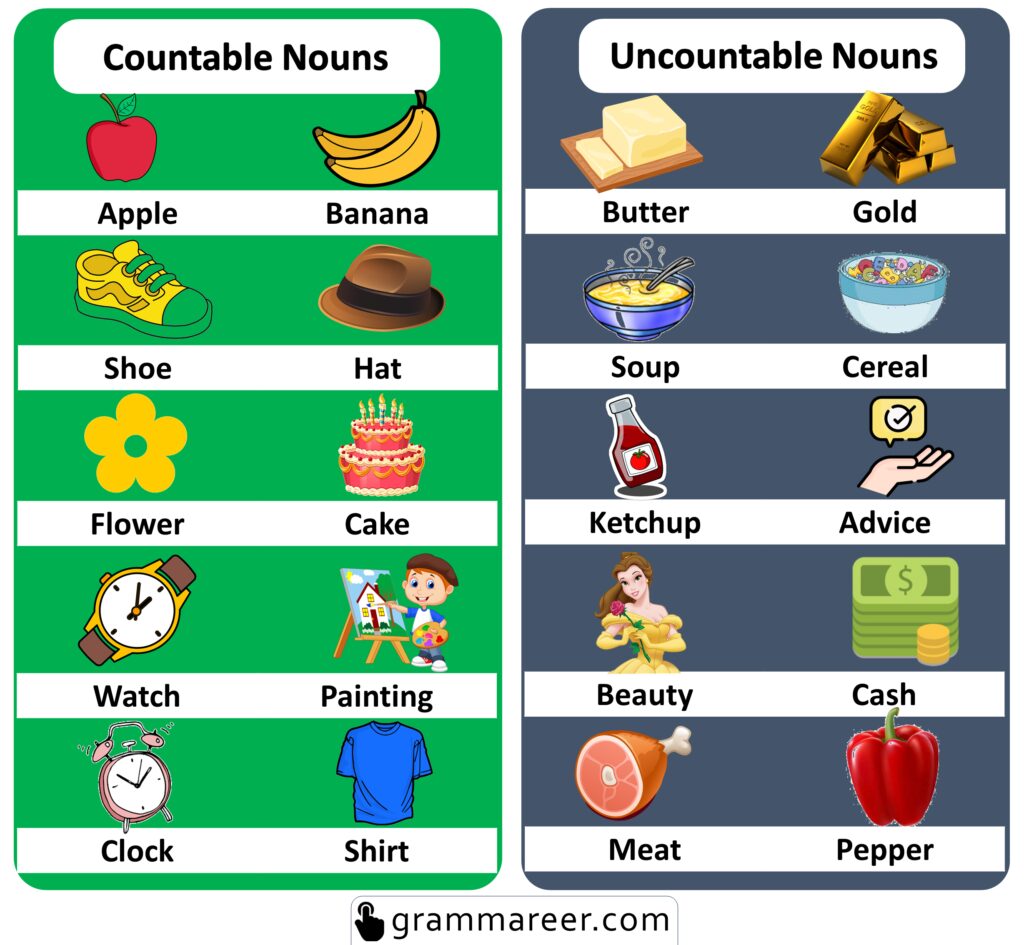
countable vs uncountable nouns
Read More

